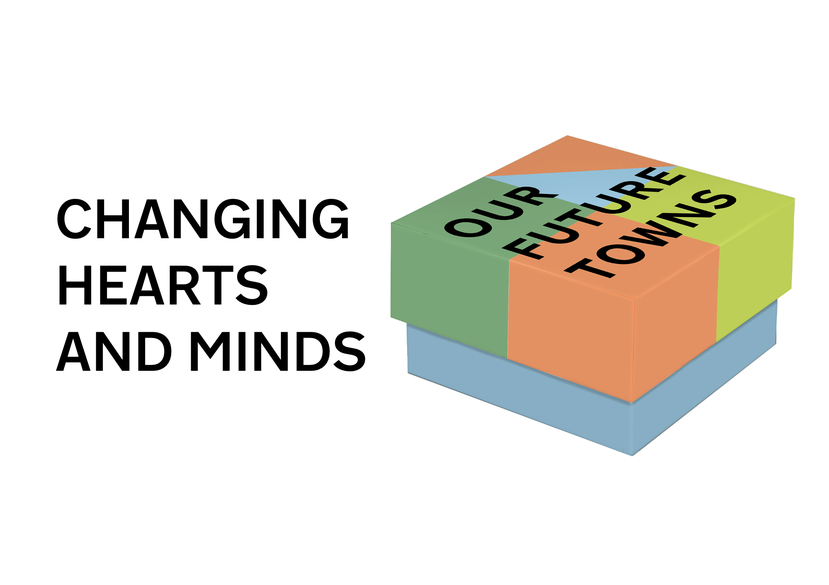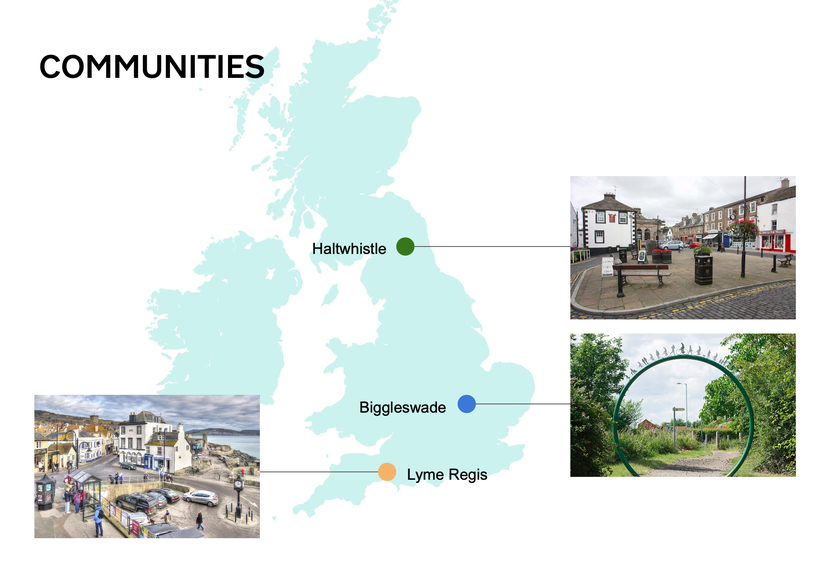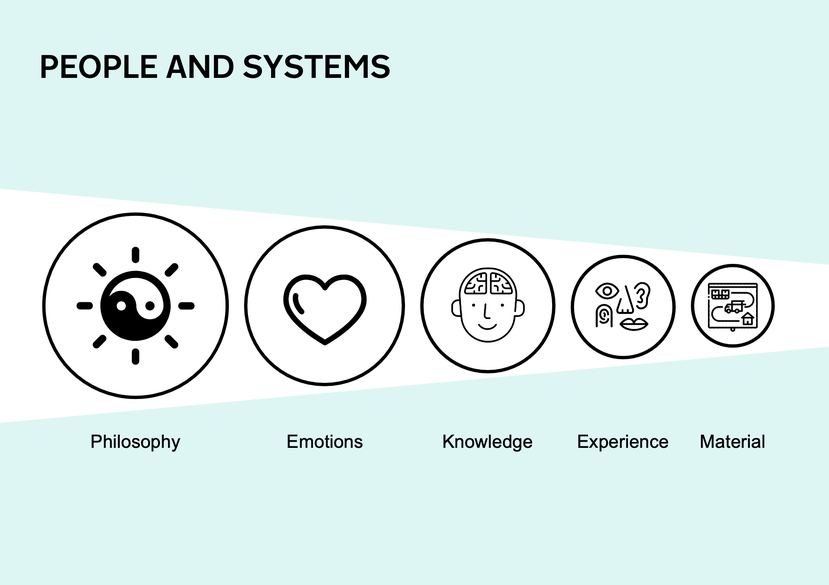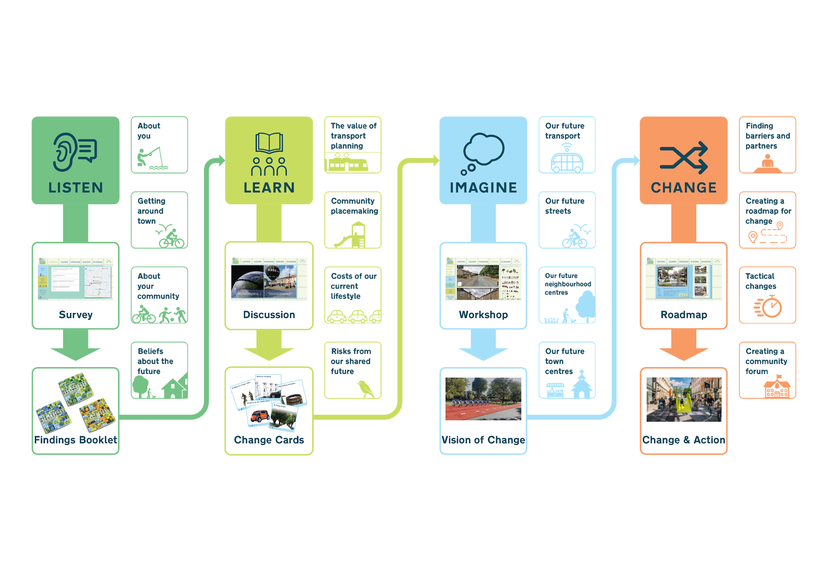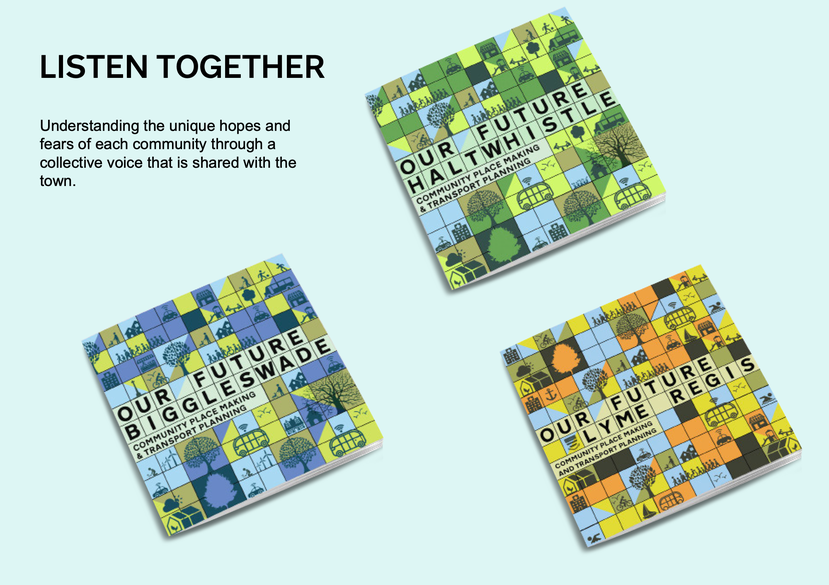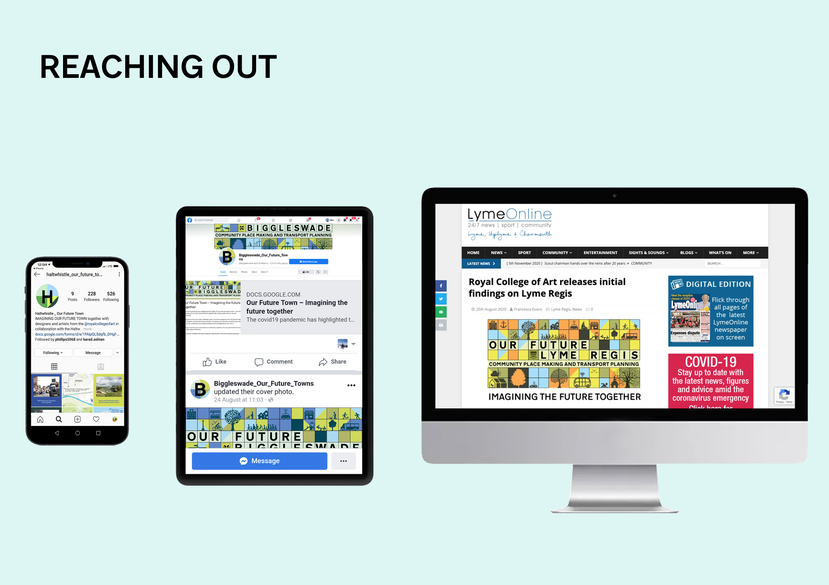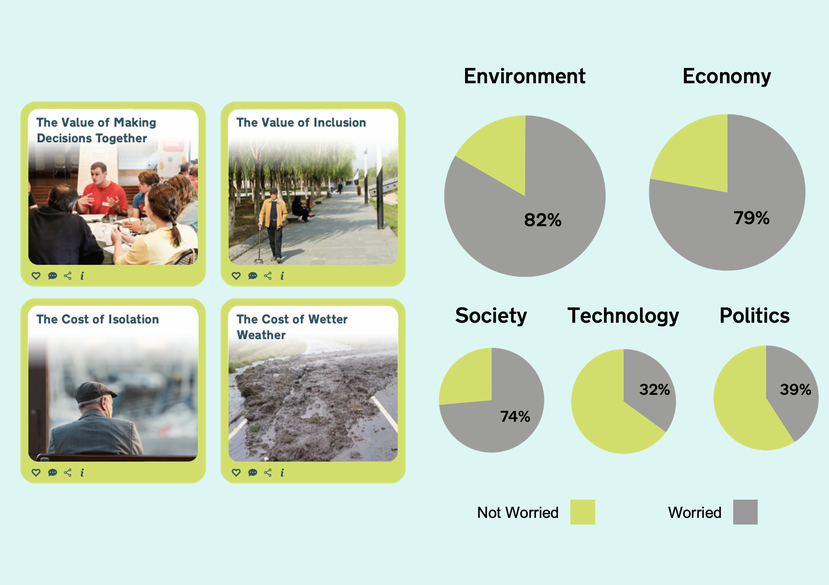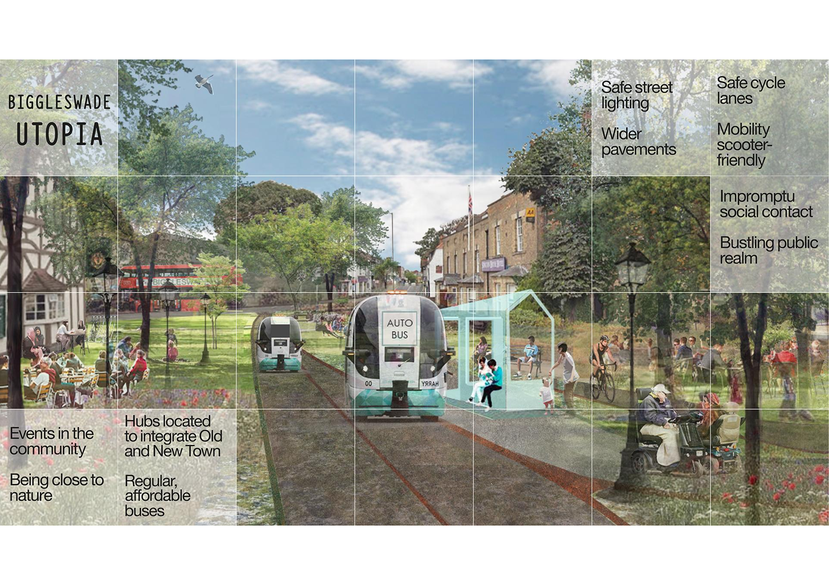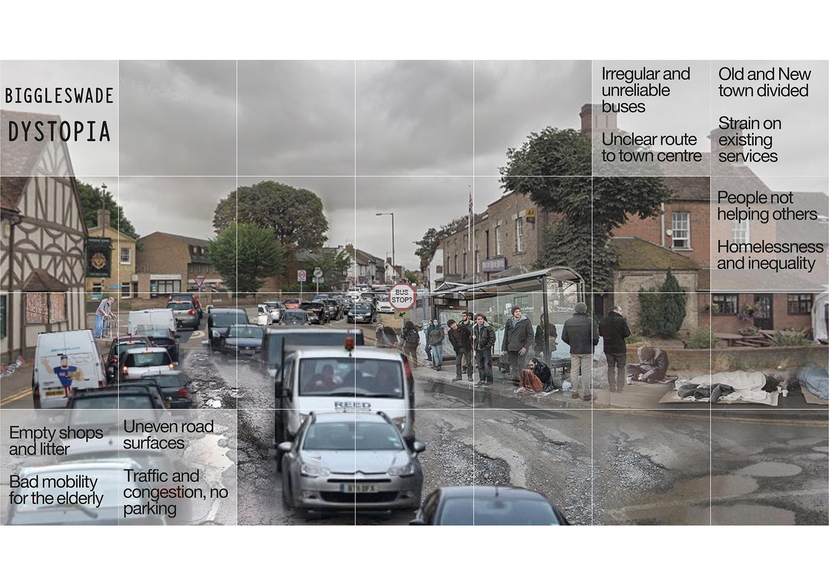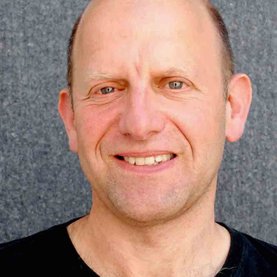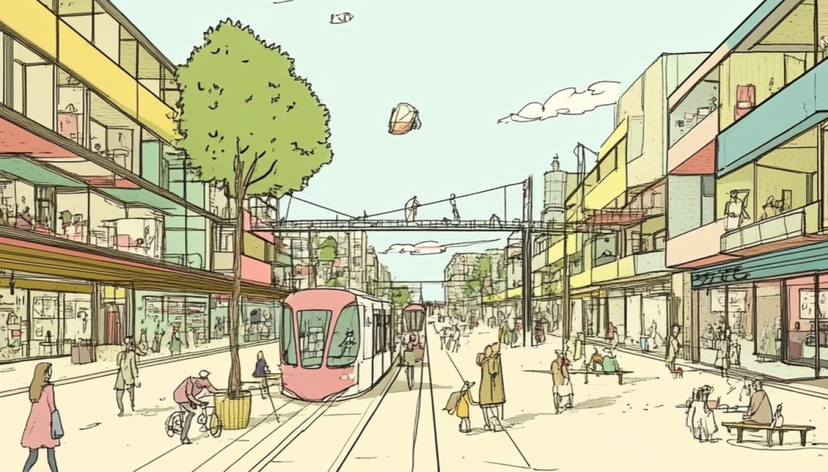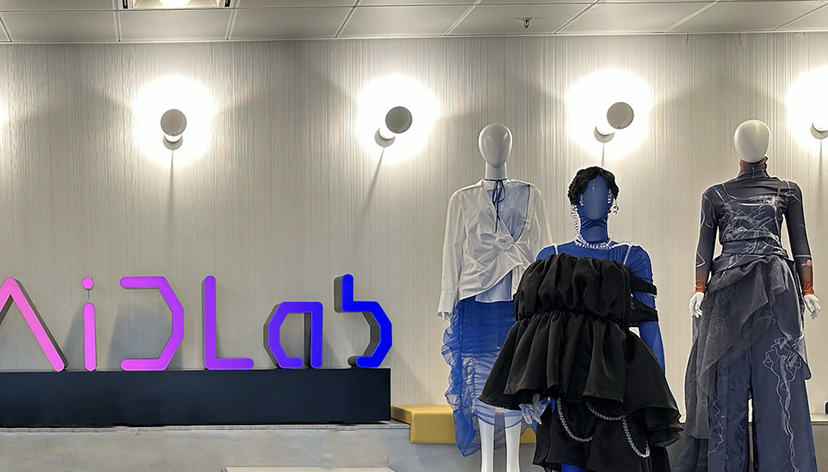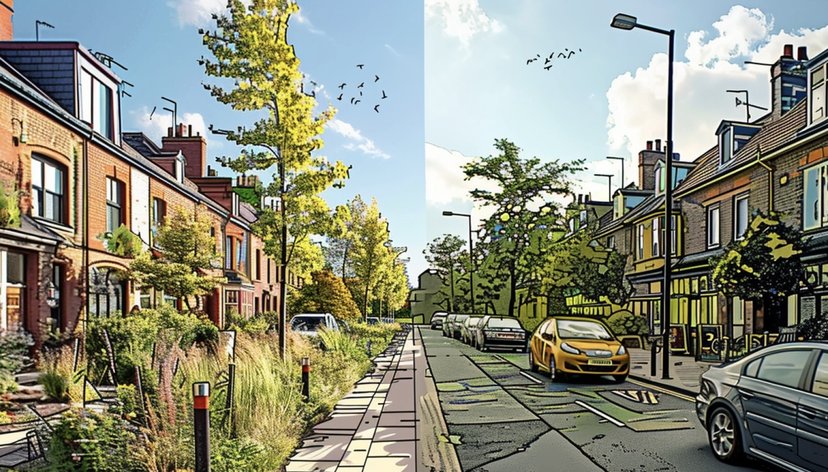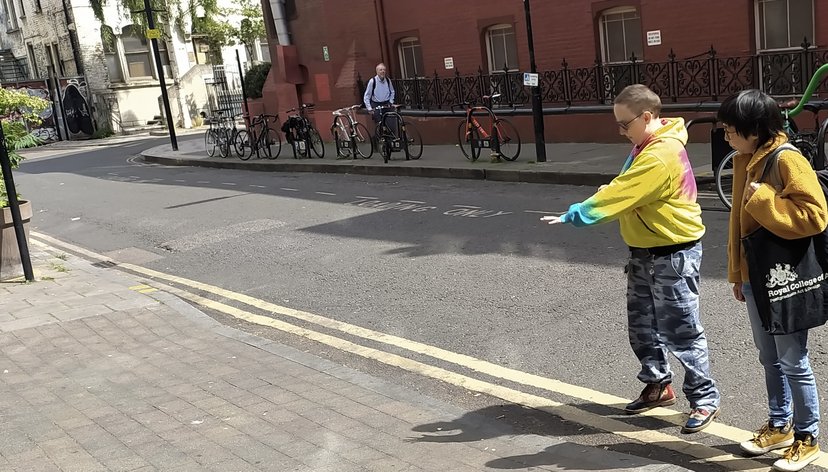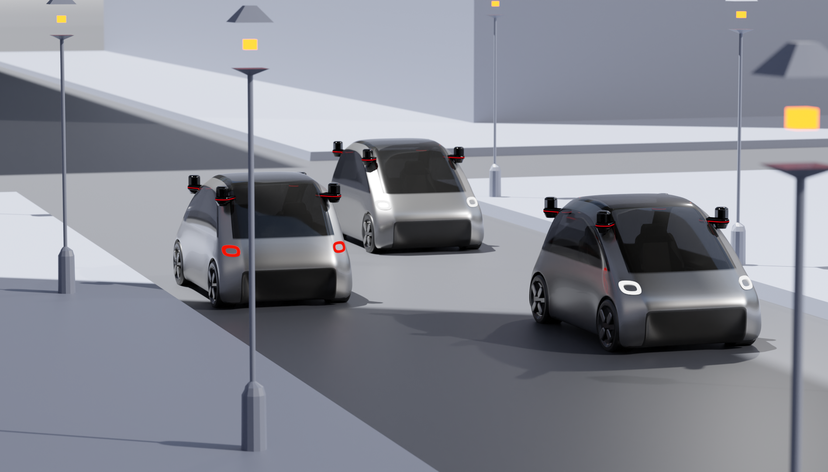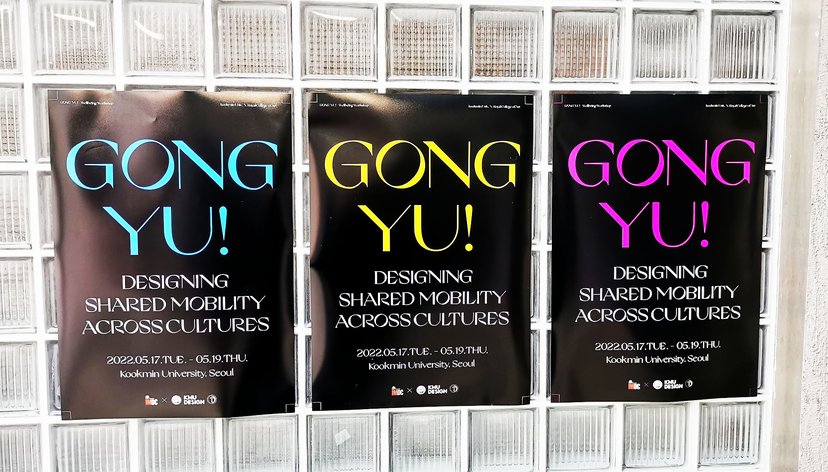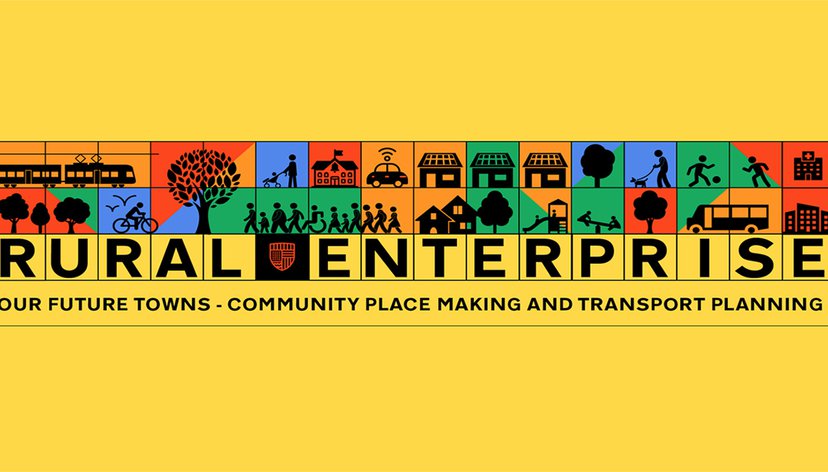
Community Placemaking and Transport Planning

Our Future Towns is a project developed with people from across the country to reimagine how they can engage with the challenges of community place-making and transport planning.
Our focus is on how we can build community together, how we get around town and people’s ideas and values when they think about their future.
At a Glance
- Our Future Towns is a creative and playful set of online and offline tools for community place-making and transport planning that will help communities and planners imagine their future towns together.
- The current way we plan our towns and communities isn't working. We're building more roads, more car dependent communities and ignoring the challenges of health, social isolation, economic costs and climate change.
- We worked with three communities across the UK - each with their own local issues but all in the midst of lockdown - so a challenging time for everyone - but also an interesting time to reflect on the importance of our towns and the places that we live.
- We developed a systems approach that understands that the greatest levers of change happen when we engage with, and change, people's philosophies, feelings and knowledge.
- The four stages of this approach include listening to each other, learning together, helping people to imagine the future and support to make changes that matter.
- We listened to over a hundred citizens and created a small booklet for each town that summarised the different perspectives that they provided and fed this shared knowledge back to them.
- We reached out online through instagram, facebook and local media to ensure we made contact with all sectors of the community.
- We created prototype interfaces for digital maps and street views that allow people to ‘drag and drop’ new routes and paths for walking and cycling and identify places and buildings that needed more than just a lick of paint.
- We also imagined augmented reality tools that allow people to see what these changes would look like on their mobile phones.
- We are now establishing future partners and funding streams as well as working with existing communities and new developments to find ways of testing and developing these tools collaboratively
Gallery
More information
The challenge
The Covid-19 pandemic highlighted the current fragility of our interconnected world: from the importance of our local communities to the impacts on global trade, jobs and our natural environment.
In response to this and wider challenges about the future, designers from the Royal College of Art supported by the professional bodies of TPS, CIHT, RTPI, and private organisations ITP, UK Regeneration and MBC, came together to seek a better way forward.
Together with partners from councils, civil society and charities, the RCA connected with three rural communities around England so that we could understand their beliefs, feelings and knowledge about their towns.
Our approach
We worked with three communities – Biggleswade in Bedfordshire, Haltwhistle and surrounding parishes in Northumberland and Lyme Regis in Dorset – to understand people’s underlying experience and knowledge of their communities, how they get around and their attitudes towards the future.
We used this as the starting point for the development of a set of tools that will help people to learn together, imagine their future and make change that matters – with a focus on how they can build their community together, improve the ways they get around their town and how they might share their ideas about the future in more collaborative and supportive ways.
Activities and Outputs
We worked with the National Association of Local Councils to identify towns and leaders who might be interested in a new approach to community development.
- Listen to each other
With the support of local community leaders, we reached out to a range of citizens and asked them to tell us about themselves, about their community, how they get around town and their beliefs about the future.
We used the findings from this listening phase to create a sketch portrait of each town and the things that matter to the community and shared this back as a booklet containing maps, diagrams, facts and even poetry.
In the final section of our learning activity we listened to people’s feelings and beliefs about the future – both things that make them optimistic and things that worry and concern them. Most of the responses showed that ‘helping each other’ lies at the heart of community optimism and the lack of concern for the needs of others – the elderly who may be vulnerable and the young who’s futures are at risk - form the kernel of pessimism about the future.
This collective wisdom also showed that issues around economic inequality, the environment and social isolation were considered important issues that need to be addressed, while political differences and the impact of technology were either less of a barrier to the majority or potentially of value.
We used this section to highlight what a future town might include and created some key diagrams illustrating larger infrastructure opportunities.
Each findings booklet ended with a key view of the town re- imagined as a future utopia or dystopia.
- The utopian perspective included a summary of people’s ‘hopes and opportunities’ and highlighted things that people felt optimistic about when they thought about the future.
- The dystopian view was based on their ‘concerns and worries’ and shows the issues that people are pessimistic about.
These images act as ‘thought containers’ that reflect possible futures back to the community and can be used to enable richer conversations about the future, ensuring that the town does not simply focus on overcoming the problems that they face but that they might embrace a positive and inclusive future.
2. Learn together
The opportunities and challenges generated through listening to the community create a powerful picture of a town’s people and its environment, highlighting not just place-based and infrastructure challenges but also showing the social and human connections that underpin each town.
But while there is often an instinctive understanding of these issues, communities are not necessarily the ‘experts’ in either place-making or transport planning so the learning phase aims to provide everyone with knowledge, some new and some already known implicitly, which will help everyone to re-frame what issues need to be considered and what things we can change if we pull together.
It also aims to build a wider consensus and connections between different groups so that change can be made through shared knowledge and collaboration rather than through more competitive or reductive approaches.
When we think about our public realm and how we get around we can immediately go straight to the solutions and forget that for many of us, these solutions look like they were invented by somebody else rather than developed collaboratively. To help move towards a shared mindset we wanted to explain some of the benefits of sustainable place-making and transport – healthy and vibrant communities - as well as some of the costs of our current behaviour – isolation, pollution and reliance on costly infrastructure – as well as risks from our common futures such as the climate crisis, environmental risks and technical redundancy.
These ‘knowledge cards’ give everyone in a town a little knowledge about the benefits of community place-making and the costs and challenges if we don’t make changes. At a simple level, we ask ‘What do you think and feel about them and how could we make them more relevant to our future?’
While knowledge about many of these issues is valuable, we also recognise that it can become more powerful when it connects into a local community context. Design can help to visualise information and bring it to life in new ways.
Beyond sharing knowledge about place-making and transport, we have developed a series of ‘change cards’ to show what change might look like in your town.
The cards show changes that can be made at different scales, from how we use our homes and share our streets, through neighbourhood issues that might include improving or making better connections between our local shops, green spaces, school and GP to larger townscape issues including the quality of our town centre, the availability of public transport and the ability to share resources so that we are not isolated in our cars.
These cards can be customised by your town, based on places that are close by or that people in your community know and recommend.
In parallel, with knowledge around problems and benefits we wanted to share best practice places with each town, but we didn’t want to use ‘generic’ solutions, so we asked each community to name some of their favourite places.
Many of their favourite towns are not only architecturally significant but have already made changes or have environments that make them people friendly and full of life – not full of cars.
So, perhaps communities have better ideas about what makes a good town than politicians and planners? And we can inject ‘a sense of place’ into planning rather than ‘department of transport’ approved solutions?
3. Imagine the future
While learning together will lead to a greater level of knowledge, shared concerns and mutual ambitions, we also wanted to develop ways to help communities to express their own creativity – to imagine their future rather than have a future imposed upon them.
So we developed a range of ways to allow people to express themselves – building on community knowledge and interests, making tools more playful and creative, and even democratising some of the technology that designers, engineers and planners currently own and control.
We imagined how the learning cards and best practice places that we shared could be used to discuss and visualise the future of our streets, neighbourhoods and town centres. The overlay cards allow communities to create quick and simple visions of their towns, without the skills needed to create Photoshop renders.
We created prototype interfaces for digital maps and street views that allow people to ‘drag and drop’ new routes and paths for walking and cycling and identify places and buildings that needed more than just a lick of paint. People can use this to deal with real issues in their lives from worrying about how their children can walk or cycle to school safely to thinking about how they can use their streets and neighbourhood assets to make new friends and learn new skills
We developed a game that groups could use to share their knowledge around the town’s challenges and use this playful activity to respond to challenging issues in surprising and unexpected ways.
And to complement the map and street-view tools, we proposed that augmented reality tools could also be developed that allow people to see what changes to their streets might look like on their mobile phones, laptops or tablets.
4. Making change that matters
While the ‘imagine tools’ provide powerful ways to discuss and visualise our future towns, there is a great deal of work needed to bring these ideas from the ‘drawing board’ to the real world.
At this point, we need to share our vision with town leaders, authorities and professionals but we would like to suggest a few strategic opportunities to ensure that change happens in a careful and community centred way.
Communities identified barriers to change including lack of joined up leadership; poor coordination between towns, county councils and regions; a lack of inclusion, particularly with the younger generation; and the need to move to financial models that support ‘community value’ rather than financial returns on investment.
We identified the need for community forums and places (in towns and online) where people could discuss and share their ideas and concerns; a roadmap built on shared philosophies and feelings as well as experiences and material change; the benefits of tactical changes that show that rapid change is possible and of value; community based financing that locks in community value; the need for events and activities that celebrate change; and last, but not least, the need to engage everyone in the quality of life in their towns and public realm.
5. Next steps
Our Future Town demonstrates a new approach to working with communities that will support the changes we need, and that directly connects with government objectives on climate change and transport. They do this in a collaborative way that changes the dynamics of a community and supports greater local autonomy.
We have identified a range of areas where the approach adds value including:
- Interdisciplinary planning and engagement around neighbourhood, town and regional development.
- Vision based transport and town planning that goes beyond simplistic predict and provide modelling which often leads to over-reliance on old and out-moded data and forecasting techniques.
- A transition to active travel planning that focuses on inclusive well-being and cross-disciplinary factors including health, education and social inclusion.
- A factor ten approach to de-carbonisation that encourages a fundamental rethink in our personal, community and professional practices.
We also created a roadmap to support shorter and longer term development opportunities. These included outreach across professional, public sector and community organisations and the development of an open platform and resources that will help communities and professionals to build shared capacity and capability around this approach.
We are now establishing future partners and funding streams as well as working with existing communities and new developments to find ways of testing and developing these tools collaboratively
Outputs
Outputs from the project are listed below:

Ask a question
Get in touch to find out more about our research projects.
[email protected]

